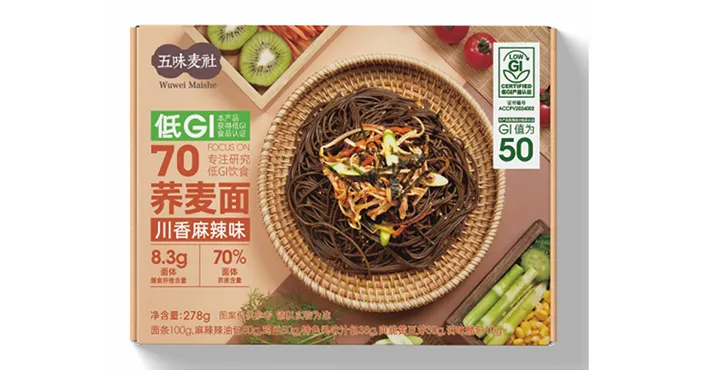A Guide to Crafting Delicious Homemade Buckwheat Pasta from Scratch
How to Make Buckwheat Pasta A Delicious Gluten-Free Alternative
Buckwheat pasta, often referred to as soba in Japanese cuisine, is a nutritious and flavorful alternative to traditional wheat pasta. This pasta is naturally gluten-free, making it an excellent choice for those with gluten sensitivities or celiac disease. In this article, we’ll guide you through the process of making buckwheat pasta from scratch, so you can enjoy a healthy and delicious meal.
Ingredients
To make homemade buckwheat pasta, you will need the following ingredients
- 1 cup buckwheat flour - 1/4 cup all-purpose flour (optional for non-strict gluten-free diets) - 1/2 teaspoon salt - Water (as needed)
Feel free to adjust the flour ratios based on your dietary needs and taste preferences. Keep in mind that buckwheat has a distinct, nutty flavor that enhances the pasta’s overall taste.
Equipment Needed
- Mixing bowl - Rolling pin or pasta machine - Knife or pasta cutter - Large pot for boiling water - Colander for draining
Step-by-Step Instructions
1. Combine the Ingredients Start by mixing the buckwheat flour and optional all-purpose flour in a mixing bowl. Add the salt and mix well. If you are strictly adhering to a gluten-free diet, you can omit the all-purpose flour for a purely buckwheat pasta.
how to make buckwheat pasta

2. Add Water Gradually add water to the flour mixture, a tablespoon at a time. Stir the mixture until it starts to come together into a dough. You want a dough that is pliable but not too sticky, so adjust the water accordingly.
3. Knead the Dough Once the dough has formed, turn it out onto a clean surface and knead it for about 5-10 minutes. Kneading helps develop the texture of the pasta. If the dough is too crumbly, you can add a bit more water.
4. Rest the Dough Wrap the kneaded dough in plastic wrap and let it rest for at least 30 minutes. This resting time allows the flour to hydrate fully and the dough to become more pliable.
5. Roll Out the Dough After the resting period, divide the dough into smaller portions. Use a rolling pin or a pasta machine to roll out each portion to your desired thickness. If using a rolling pin, dust the surface lightly with buckwheat flour to prevent sticking.
6. Cut the Pasta Once your dough is rolled out, you can cut it into your preferred shapes. For traditional soba, cut it into thin noodles. You can also cut it into lasagna sheets or shape it into ravioli. Use a knife or a pasta cutter for even shapes.
7. Cook the Pasta Bring a large pot of salted water to a boil. Add the buckwheat pasta and cook for about 4-6 minutes, or until the noodles are al dente. Fresh pasta cooks much faster than dried pasta, so keep an eye on it to avoid overcooking.
8. Drain and Serve Once cooked, drain the pasta in a colander and rinse it briefly under cold water to stop the cooking process. You can serve it immediately with your favorite sauces, stir-fries, or even in soups.
Tips and Variations
- Flavoring Consider adding herbs or spices to the dough for an extra flavor boost. Garlic powder, spinach powder, or even turmeric can add a unique taste and color to your pasta. - Storage If you have leftover dough, you can wrap it tightly and refrigerate it for up to two days. Alternatively, you can dry the cut pasta and store it in an airtight container for later use.
Making buckwheat pasta at home is not only easy but also rewarding. It allows you to create a dish that caters to your dietary preferences while enjoying the rich, earthy flavors of buckwheat. Whether served in a simple broth or tossed with your favorite vegetables, this pasta offers a delightful experience that you won't want to miss. Enjoy your culinary creation!
-
Unleash Your Inner Chef with Delectable Italian Pasta CreationsNewsAug.01,2025
-
Savor Health and Flavor: Irresistible Soba Noodles for Sale Await!NewsAug.01,2025
-
Nourish Your Body with Premium Organic Ramen - A Culinary Delight AwaitsNewsAug.01,2025
-
Elevate Your Dishes with Our Exquisite Kinds of Egg NoodlesNewsAug.01,2025
-
Dive into Flavorful Convenience with Our Ramen OfferingsNewsAug.01,2025
-
Discover Exquisite Types of Naengmyeon and Chilled Soba NoodlesNewsAug.01,2025
-
Is Whole Wheat Pasta Healthy?NewsMay.30,2025
Browse qua the following product new the we

















































































































